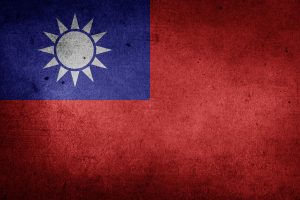Taiwan’s bid to join the CPTPP is a game-changer not only for Taipei and the future of trade in the Indo-Pacific, but also in shifting the power dynamics of the region. At the same time, Taiwan’s latest maneuver is also intensifying pressure on Washington to reconsider its own position regarding trade deals and multilateralism more broadly. Whether or not Taiwan can become a CPTPP member will depend greatly on the political strategy to be advanced by Taipei, but it will also be a test case of how a high-stakes gambit in the Indo-Pacific can move forward without the United States.
Unlike the announcement by Beijing only a week before Taiwan’s formal declaration to request membership in the CPTPP, Taipei has always made clear its interest in joining the multilateral trading bloc. In fact, Taiwan has signaled a wish to join since the deal’s earlier incarnation as the Trans-Pacific Partnership (TPP) agreement. As was the case with the TPP, the door had always been open for Taiwan to join the CPTPP. In the final chapter of the TPP, for instance, Article 30.4 on accession states that “any state or separate customs territory that is a member of APEC” would be eligible for membership so long as they are able to comply with the pact’s rules. That in theory clears the way for Taiwan to join, given that it is an APEC member.
At the same time, Taiwan has been stepping up efforts to secure a bilateral trade deal with the United States, which it would need separately, given that Washington remains outside of the multilateral trade deal. As a result, Taiwan’s government has taken a number of steps that have been unpopular internally, most notably in the agricultural sector, to become accession-ready. The decision to open up to U.S. pork and beef imports has come under particularly harsh attack from consumer groups as well as opposition parties. In fact, a referendum will be held on December 18 asking voters whether pork containing the additive ractopamine should be banned.
With the latest CPTPP announcement by the government of President Tsai Ing-wen, who is formerly a seasoned trade negotiator herself, the ruling party can argue that opening up Taiwan’s agricultural market is not only essential to further trade negotiations with the United States, but also necessary for Taiwan to be an integral part of the global trading community moving forward.
For unlike mainland China, which had announced its request to join the CPTPP only a week earlier, Taiwan’s need to join the trade deal is first and foremost driven by considerations for its economic future. While analysts question the intent and indeed seriousness of China’s bid, given the concessions and reforms it would have to make to ensure that it becomes accession-ready, the Taiwanese government has demonstrated its willingness to take political unpopular moves as the price to be paid for signing on to trade deals.
After all, while the Taiwanese economy may be flourishing for now, the risks of further political marginalization in light of Beijing’s ever-growing influence, coupled with the limitations to its own economic growth, pose concerns for the future.
Currently, the Taiwanese economy is going from strength to strength, with the government projecting GDP growth for this year to reach nearly 6 percent, its highest level in 11 years. Surging global demand for high capacity semiconductors, which home-grown companies such as TSMC dominate, is expected to continue keeping the economic engine revving in coming years.
But as other countries look to bolster their own semiconductor supply chain, there is greater pressure for Taiwan to leverage its current advantages in order to diversify into other technology sectors and also to make headway in the international trading order at a time when the Indo-Pacific is home to not just the CPTPP, but also the Regional Comprehensive Economic Partnership agreement, which Taiwan has also yet to join. With more countries in addition to Britain and China expected to declare their intentions to join the CPTPP, Taiwan can ill-afford to stand on the sidelines of the world’s most high standard trade agreement to date, which addresses non-tariff barriers as well as issues critical to the digital economy.
Yet even as Taipei is far more accession-ready than Beijing, China has already protested loudly against Taiwan’s intentions, declaring that it is politically unacceptable for Taiwan to join the CPTPP. While other member countries including Japan, Australia, and Canada have voiced their support for Taiwan’s application to join the pact, the prospect of accepting Taiwan without China remains shaky. Even the possibility of both Taiwan and China joining the pact simultaneously – as was the case two decades ago when the two governments joined the WTO at the same time – seem more difficult to fathom, given the shifting power dynamics in China’s favor since 2001. But whatever decision is taken with regards to the accession of China and Taiwan, one thing is clear: the United States will not be part of the decision-making process, nor will it have the ability to push for Taipei’s accession behind the scenes at a time when the regional order of the Indo-Pacific is in flux.
How and whether Taiwan can join the CPTPP in the face of China’s wrath will be a test case of the will of smaller countries of the Indo-Pacific in defining strategic relations with Beijing without the United States.
































